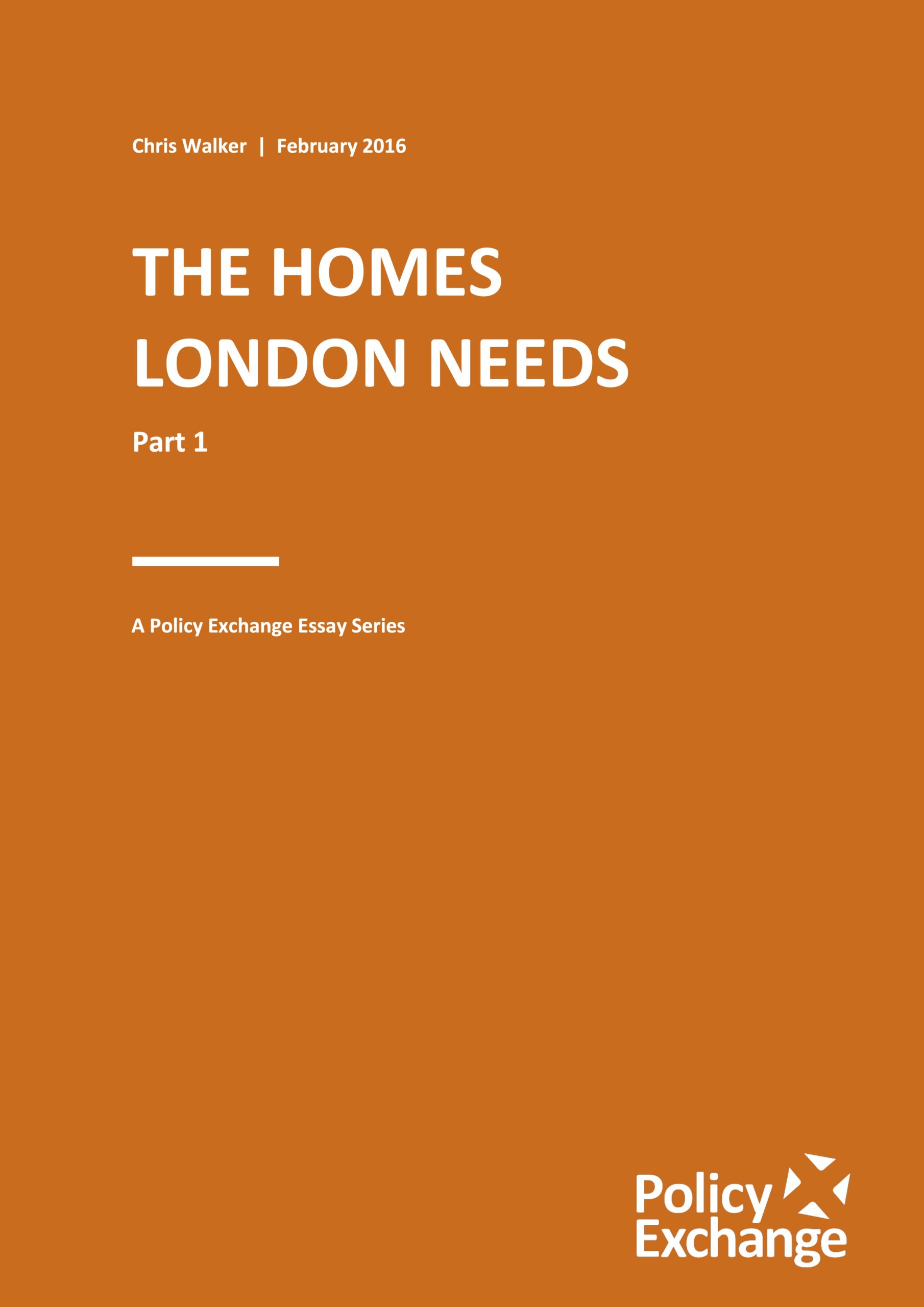
The Homes London Needs: Part 1
There is an acute housing shortage in our Capital and housing ranks first as an electoral issue for Londoners as we head into the Mayoral race. Housing clearly has to be one of the top Mayoral priorities for 2016.
We are not building the homes London needs. We have not been for the last twenty years. After declining during the post-war years, London’s population has been growing since the mid-1990s, by nearly 100,000 a year on average. That’s roughly 40,000 households a year.
The cumulative shortfall in housing supply year after year, of around 10,000 homes a year since the mid-1990s, has also created today’s shortage homes meaning that we actually need nearly 50,000 (not 40,000) additional homes a year over the next twenty years – the homes London needs
Yet, the supply of new homes – both new builds as well as the conversion and subdivision of existing homes – has been only 27,000 a year.
As a consequence house prices have rocketed and wages have failed to keep pace. In 1997 the price of the average London home was 4 times average London earnings. Today it is 11 times. The average London house price now stands at £525,000. Over the last 20 years London house prices have risen on average 7½ % a year. If house prices in the capital continue to rise at this rate, the average London house price will comfortably top £1million within the next 10 years and close to 20 times average London earnings.
Yet rocketing house prices are not solely about supply. London is a global city and an international financial hub. Shifting global credit conditions mean London-specific drivers in its property market are acting alongside the domestic factors. Average mortgage interest rates today are around 3% compared around 6% in 1997 . Cheaper mortgage debt has invariably meant higher mortgage debt capitalised into higher house prices.
Nonetheless this worsening affordability matters. Much of London is now out of reach for many, including hundreds of thousands of affluent young professionals in their thirties who live in a city where they can never own or even part own.
London is fast becoming the preserve of the wealthy as talented and creative people are forced away and a “hollowing out” effect plays out – London for the rich and the poor, not for the middle.
So what can be done to approve London’s housing supply within the constraints we face?
There has been much debate, most especially in recent years, about building on London’s Green Belt. It is estimated, for example, that by building on just 10% of London’s Green Belt within the M25 we could build a million homes – the homes London needs for 20 years. Yet despite such a potentially great prize, the subject of building on Britain’s Green Belt remains a political taboo.
If we are to accept the current ‘build on brownfield-only’ policy stance and build the homes London needs, we will need policies that bring forward vastly increased amounts of brownfield land for a process of intensification, as well as shifting the balance of land use in our capital from commercial (e.g. industrial) use to residential use.
This introductory essay therefore tees up two further essays in the series – one looking at densification and the other shifting land use. A Direct Planning Revolution for London, by Nicholas Boys Smith, is primarily concerned with the densification of Social Estates. Mass-delivery of Manufactured Homes for Rent, by Jamie Ratcliff, is about changing the way some commercial land is used, looking especially at underused (surplus) private industrial land, public land and other brownfield land.
A key overarching principle underpinning both essays is the buy-in and say-so of local people about what gets built in their local communities, by forging a much stronger connection between ordinary Londoners and planning. People should not be able to say “no” to reasonable new housing development, but they should be able to say how and what.
The densification of London also has to happen in a way that makes it a better place to live. There are countless examples throughout London that show “more dense” doesn’t mean “less desirable”. The question of density leads us into the equally important question of what we want London to look like; its architecture, its urban form, the types of homes we want – flats or houses and, of course, archetypes (e.g. huge blocks, medium-rise, or terraced houses).
The policy challenge then isn’t just about building the homes London needs and avoiding the average £1 million house price by 2025. It is as much about building the homes London wants. The two are intrinsically linked.

